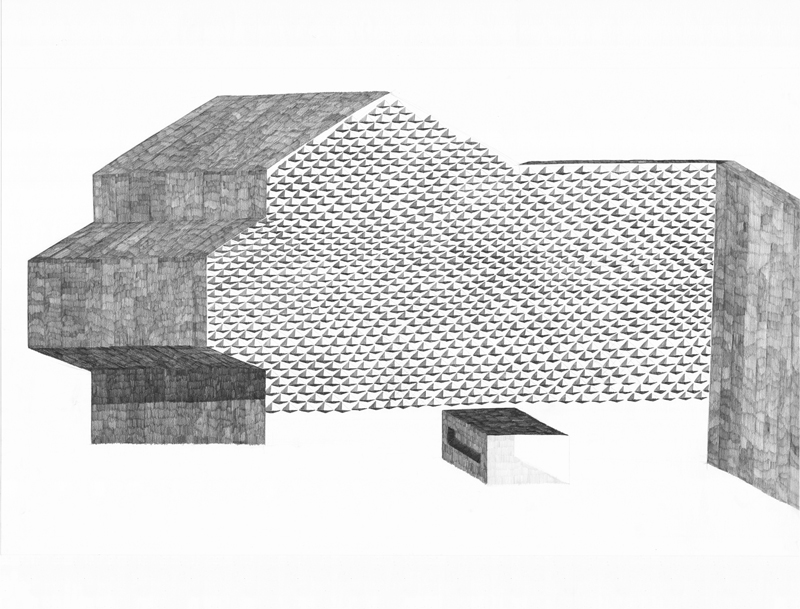

I try to bring to this page the work of the artists as cold and rigorous as possible, but it is not always possible. Sometimes, thankfully, artworks enter your life and unexpectedly lead you into childhood. And childhood, family, genealogy itself, you find it all of a sudden strange, unstable.
His father was a baker, the orchard near the house, the chickens. He was born on October 30, 1899 in Ikaztegieta, was sent a 9-year-old pastor, and came to Azkoitia because bakers were needed. I wanted to buy a piece of land before I died.
His children picked up the chicken coop on the ground. Then they opened the furniture store, the chicken cooker was transformed into a warehouse, into an immense building, built in a hurry and without a license, with bricks in sight, on the one hand, puddles on the roof, railings on the balconies and concrete blocks on the other, like those in this drawing. We were always told it was for the rain, so that we could make the water easily thanks to the angles. The snails were underneath the prominences. An architect has told me it's completely aesthetic; not functional, I've understood it. And I remembered those walls that dripped from the pinacles, always moist. We spend much of our childhood there, in that dirty warehouse, in paradise.
I don't remember my grandfather. He said that I was very small when he lay in bed after having distributed sweets to his grandchildren on Kings' Day. That's where my last name ends.
They didn't name the warehouse. Neither a name, nor a balustrade, nor a roof were there to finish at once. And it never ends.
When I saw the exhibition in Egia, I thought it was something that the artist drew, disturbing, weird, unstable in his forcefulness. Like all houses. Unbeknownst to him, Julen Agirre Egibar (Azpeitia, 27 July 1984) entered the list of my beloved artists.